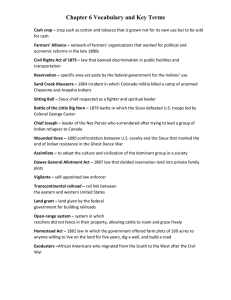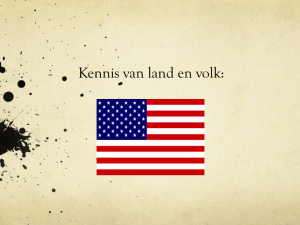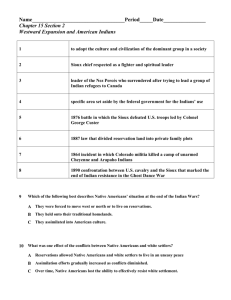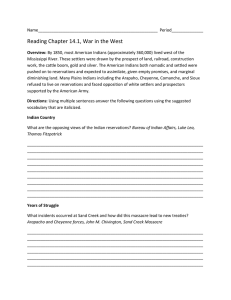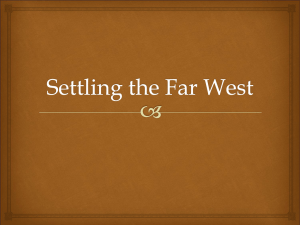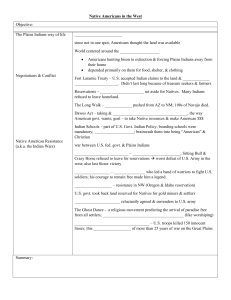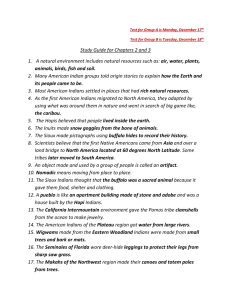Chapter 4 Transforming the West, 1865-1890 Lecture 1 (p. 85-92)
advertisement
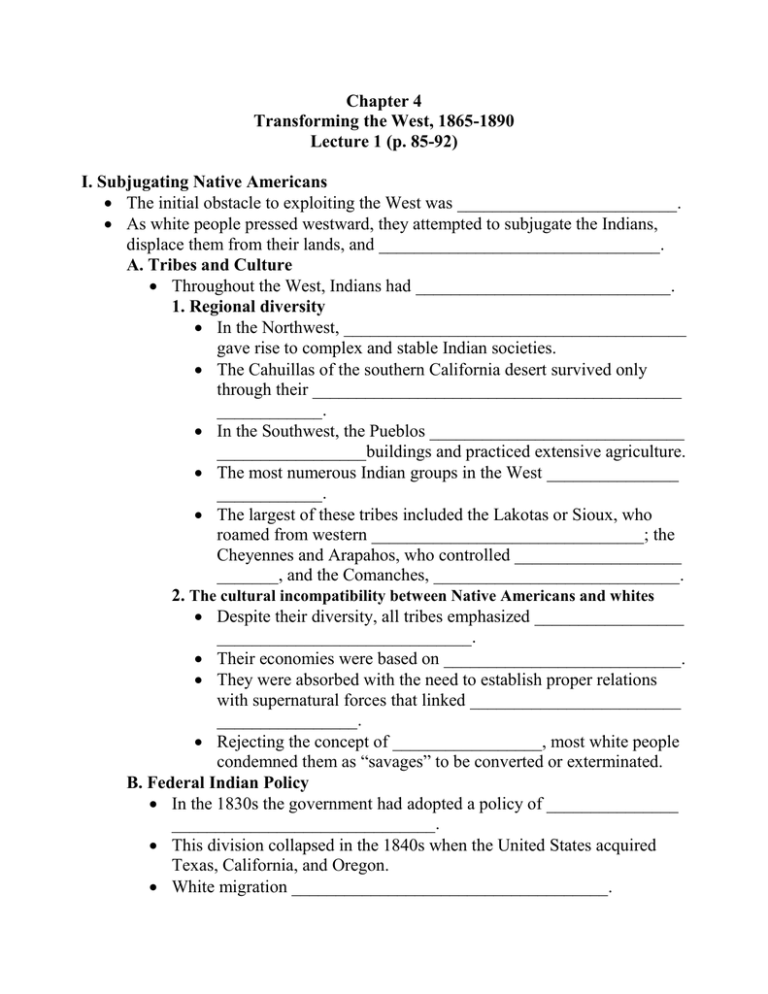
Chapter 4 Transforming the West, 1865-1890 Lecture 1 (p. 85-92) I. Subjugating Native Americans The initial obstacle to exploiting the West was _________________________. As white people pressed westward, they attempted to subjugate the Indians, displace them from their lands, and ________________________________. A. Tribes and Culture Throughout the West, Indians had _____________________________. 1. Regional diversity In the Northwest, _______________________________________ gave rise to complex and stable Indian societies. The Cahuillas of the southern California desert survived only through their __________________________________________ ____________. In the Southwest, the Pueblos _____________________________ _________________buildings and practiced extensive agriculture. The most numerous Indian groups in the West _______________ ____________. The largest of these tribes included the Lakotas or Sioux, who roamed from western _______________________________; the Cheyennes and Arapahos, who controlled ___________________ _______, and the Comanches, ____________________________. 2. The cultural incompatibility between Native Americans and whites Despite their diversity, all tribes emphasized _________________ _____________________________. Their economies were based on ___________________________. They were absorbed with the need to establish proper relations with supernatural forces that linked ________________________ ________________. Rejecting the concept of _________________, most white people condemned them as “savages” to be converted or exterminated. B. Federal Indian Policy In the 1830s the government had adopted a policy of _______________ ______________________________. This division collapsed in the 1840s when the United States acquired Texas, California, and Oregon. White migration ____________________________________. Recognizing that the “Great American Desert” could support agriculture, white settlers pressed on the eastern edge of the plains and demanded the ________________________. The government decided to relocate the tribes to separate and specific reserves. To implement this policy, the government negotiated treaties, _____________________________________, and ordered the army to keep Indians on their assigned reservations. C. Warfare and Dispossession From the 1850s to the 1880s, __________________________________. 1. The Sand Creek Massacre When ______ was discovered on land only recently guaranteed to the Cheyennes and Arapahos, white settlers wanted to _________ _________________ altogether. John Chivington, a Methodist minister, led a militia force to the Sand Creek camp of a band of Cheyennes under Black Kettle, an advocate of ___________________________. Under Chivington’s orders to “______________, big and little,” the militia attacked Black Kettle’s camp without warning. One Western newspaper demanded, “Kill all the Indians that can be killed. ________________________ is our motto.” 2. The challenge of the Sioux Indians None of the tribes were more powerful than the _________. General William T. Sherman, who had marched through Georgia against Confederates, knew the odds were different in the West. _______ Plains Indians, he declared, could “checkmate” three thousand soldiers. A federal peace commission in 1868 negotiated the ___________ ____________________. The United States abandoned the Bozeman Trail and other routes and military posts. They also guaranteed the Sioux ____________ ownership of the western half of South Dakota and the right to ___________________ in the Powder River country in Wyoming and Montana. In 1872 the _______________________ began to build a westward route that would violate Sioux territory. The white people’s destruction of the ___________ also threatened Native Americans. The climactic provocation of the Sioux began in 1874 when ________________________ led an invasion to survey the Black Hills for a military post and confirm the presence of _________. When the Sioux refused to leave the army attacked. A large body of Sioux under Sitting Bull and their Cheyenne and Arapaho allies overwhelmed an American column under Custer at the __________________________. The Indians had to divide their forces to find fresh grass for their horses and to hunt for fresh food. The conquest of the northern plains came through _____________ ____________________________________ to support resistance to the technologically and numerically superior white forces. 3. The defeat of the Nez Perce In the Northwest, the Nez Perce had ______________________ the larger forces of the U.S. Army over a 1,500 mile retreat toward Canada. The exhausted Nez Perce surrendered after being promised a return to their own land, but the government _________________ _________ and imprisoned the tribe in Oklahoma. 4. The defeat of the Navajos, Comanches, and Apaches In the Southwest, the Navajos and Comanches were subdued by persistent pursuit that prevented them from _______________. The last to abandon resistance were the Apaches, in 1886. Geronimo, with his thirty-six followers, surrendered to _______ ___________U.S. troops. D. Life on the Reservation: Americanization The next objective was to require Indians to adopt white peoples’ ways. Reformers wanted to change Indian _____________________, train Indian children in Protestant beliefs, and force the Indians to accept ______________________________. In 1890, the army used machine guns to suppress the _____________ ________, killing at least two hundred Sioux men, women and children at Wounded Knee, South Dakota. The government and religious groups also used education to eliminate ___________________________. Finally, government agents taught Indian _________________ and taught Indian ____________________. In 1887, Congress passed the ______________ which divided tribal lands among individual Indians.
